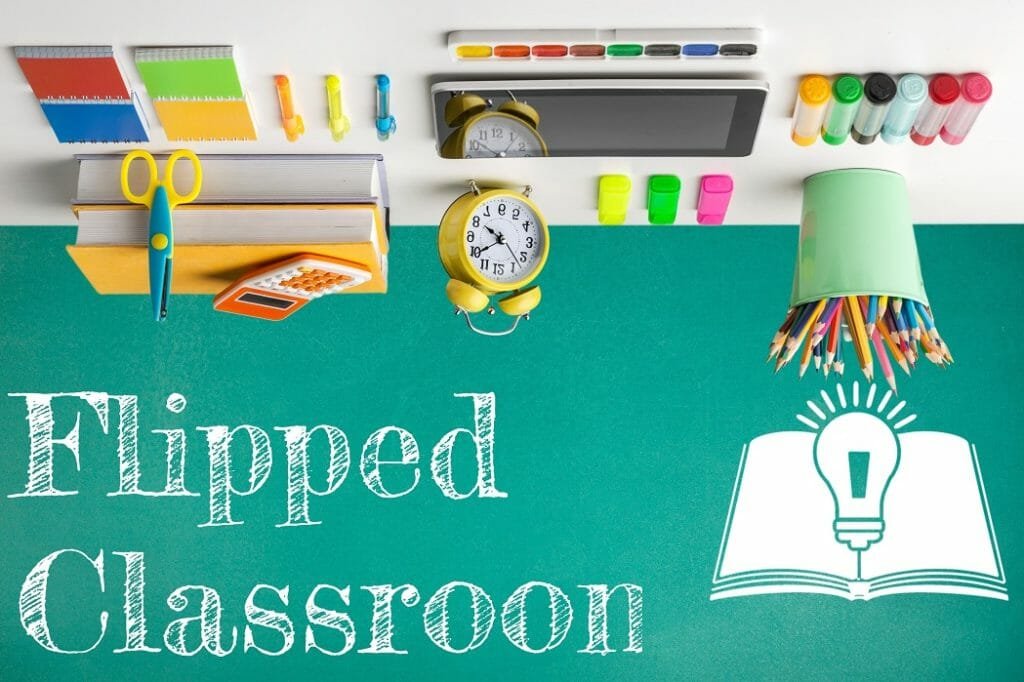Hey there, fellow learners! Sick of the same old classroom routine where the teacher talks, and you listen? Well, let’s change things up because we’re diving into the exciting world of flipped classrooms!
In this blog post, we’ll explain what a flipped classroom is, why it’s a big deal in modern education, and all the cool stuff it brings for students and teachers. So, grab a drink, find a comfy spot, and let’s go on this learning adventure together!
So, What Is a Flipped Classroom?
Imagine a classroom where everything you know about traditional teaching is turned upside down. In the usual setup, you sit in class, listen to lectures, and then go home to do homework. But in a flipped classroom model, everything gets reversed!
Here’s the deal: before you even set foot in the classroom, you get a head start on the lesson. You might watch videos, read materials, or do interactive stuff online to get a grasp of the topic. You learn at your own pace, pause, rewind, and really soak it in. And there are cool smart class apps to help, with pre-recorded lectures, learning stuff, and assignments. That way, when you get to class, you’re all set for some hands-on action.
Now, here’s where it gets exciting: when students walk into that classroom, it’s a hive of active learning. No more passive listening to lectures! They’re diving into dynamic discussions, teamwork on projects, and hands-on activities. The teacher becomes a guide, supporting students as they apply what they’ve learned and dig deeper into the subject matter.
The flipped classroom is built on two key principles: getting ready before class and diving into active learning during class. Pre-class prep lets students build a solid foundation on their own, so they come to class armed with knowledge. Then, in class, they get hands-on, apply what they’ve learned, analyze it, and put it all together.
By flipping the script, this model tackles the limits of passive learning and brings a more engaging, interactive learning experience. It boosts critical thinking, problem-solving, and teamwork – skills you need in the real world.
Why Should You Flip Your Classroom?
You might wonder why you should give this flipped model a whirl. Well, there are some awesome ways it benefits both teachers and students:
1. Flexibility: Students can learn at their own pace. They can rewind a lecture or spend more time on a tricky section – all on their terms.
2. Higher-level Learning: Since class time isn’t eaten up by basic stuff like memorizing, students get to dive into more in-depth learning – applying, analyzing, and evaluating. They can do this together or with help from their teachers.
3. Efficiency: Teachers don’t have to give the same lecture a zillion times to different classes. They record it once and use their time for cool activities that really make students learn.
But Wait, There Are Challenges Too!
Like any new way of doing things, flipped classrooms have their challenges:
1. Inequity: Not all students have the same access to technology or enough time to study at home. Some kids might fall behind if they can’t prepare in advance.
2. Screen Time: We’re all worried about how much time kids spend glued to screens. Flipping every lesson could make evenings feel like a never-ending series of recorded lectures.
3. Different Learning Styles: In a live lecture, teachers can see if students are getting it and adjust on the fly. In the flipped model, students need to take good notes and follow up with questions later.
Is Flipping Right for You?
Wondering if a flipped classroom is your cup of tea? Well, it might be, or it might not – and that’s okay! You could decide to use it for some parts of your teaching and not others. It’s all about what works best for you and your students.
Here are some questions to help you figure it out:
1. Is there a lot of passive learning in your class, like lectures or watching videos?
2. Do you want more in-class time for hands-on activities, group projects, labs, or discussions?
3. Do you wish you had more one-on-one time with students in class?
4. Are you looking for ways to make learning flexible and personalized for your students?
The more “yes” answers you have, the more a flipped classroom might be your thing. So, go ahead, flip that script and make learning a whole new adventure!
